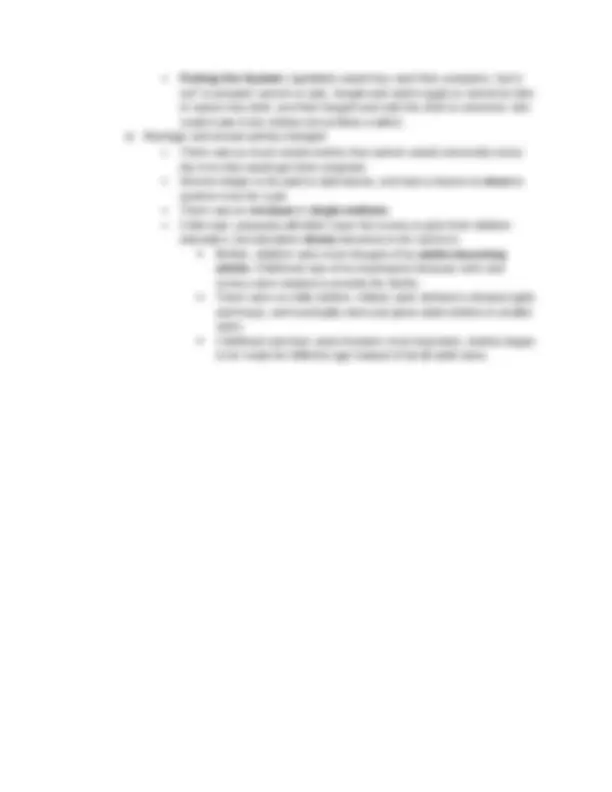



Study with the several resources on Docsity

Earn points by helping other students or get them with a premium plan


Prepare for your exams
Study with the several resources on Docsity

Earn points to download
Earn points by helping other students or get them with a premium plan
Community
Ask the community for help and clear up your study doubts
Discover the best universities in your country according to Docsity users
Free resources
Download our free guides on studying techniques, anxiety management strategies, and thesis advice from Docsity tutors
Topic 10: European Population Growth and Changing Society Material Type: Notes; Professor: Weissbach; Class: HIST-CIVILIZATIONS II - SB; Subject: History; University: University of Louisville;
Typology: Study notes
1 / 2

This page cannot be seen from the preview
Don't miss anything!


Population grew in late 18th^ century. Disease became less common in 1700’s. o People became more immune to illness; they did nothing to purposefully become immune. o Rats with Bubonic Plague were replaced by other rats that did not carry the disease. o Smallpox was less common. Scientific Revolution: scientists created vaccines for smallpox ; given small amount of illness to become immune to it. Vaccine begins to be used by bourgeoisie and upper class; more educated people. Lower class was less knowledgeable and trustworthy to the idea of being given a small amount of smallpox to become immune to it. They were eventually influenced to use it because of its use in the higher classes. Supply of food; better nutrition. o Healthier women meant healthier babies. o More food meant less starvation. Organization of agriculture. o Before, only certain fields were used for crops, and some were left empty so they may become fertile again. o Used crop rotation : planted crops in every field, but planted different crops instead of the same one every season. Some crops supplied nutrients to the soil, and other took nutrients. o Food increases within a year by 50%. o Low class wanted to keep their traditional methods, but was eventually influenced by higher classes that used crop rotation. o Seed drill : drilled holes into a neat line, and planted one seed in each hole. Before, farmers used broadcasting : throwing seeds across the field. Some plants had to be cut when a cluster of them grew together, so seeds were wasted. o More food for animals meant more meat for people and more fertilizer for soil. o Fields began to be enclosed with fences. This made it easier to keep track of livestock and manage the field. o Potatoes: more were planted; good for vitamins A and C; first used as simply animal food. Potatoes and turnips were not native to Europe. Manufactured goods produced. o More textiles, cloth, blankets and especially clothing were needed for the growing population. Townspeople wove and threaded yarn.
Putting-Out System : capitalists would buy wool from peasants, “put it out” to peasant women to spin, bought and sold it again to someone else to weave into cloth, and then bought and sold the cloth to someone who could make it into clothes (most likely a tailor). o Marriage and sexual activity changed. There was so much social control, that women would commonly marry the men that would get them pregnant. Women began to be paid to spin/weave, and had a chance to move to another town for a job. There was an increase in single mothers. Child care: peasants still didn’t have the money to give their children education, but education slowly becomes more common. Before, children were more thought of as adults becoming adults. Childhood was of no importance because work and money were needed to provide the family. There were no child clothes. Infants were clothed in dresses (girls and boys), and eventually were just given adult clothes in smaller sizes. Childhood and teen years became more important; clothes began to be made for different age instead of small adult sizes.